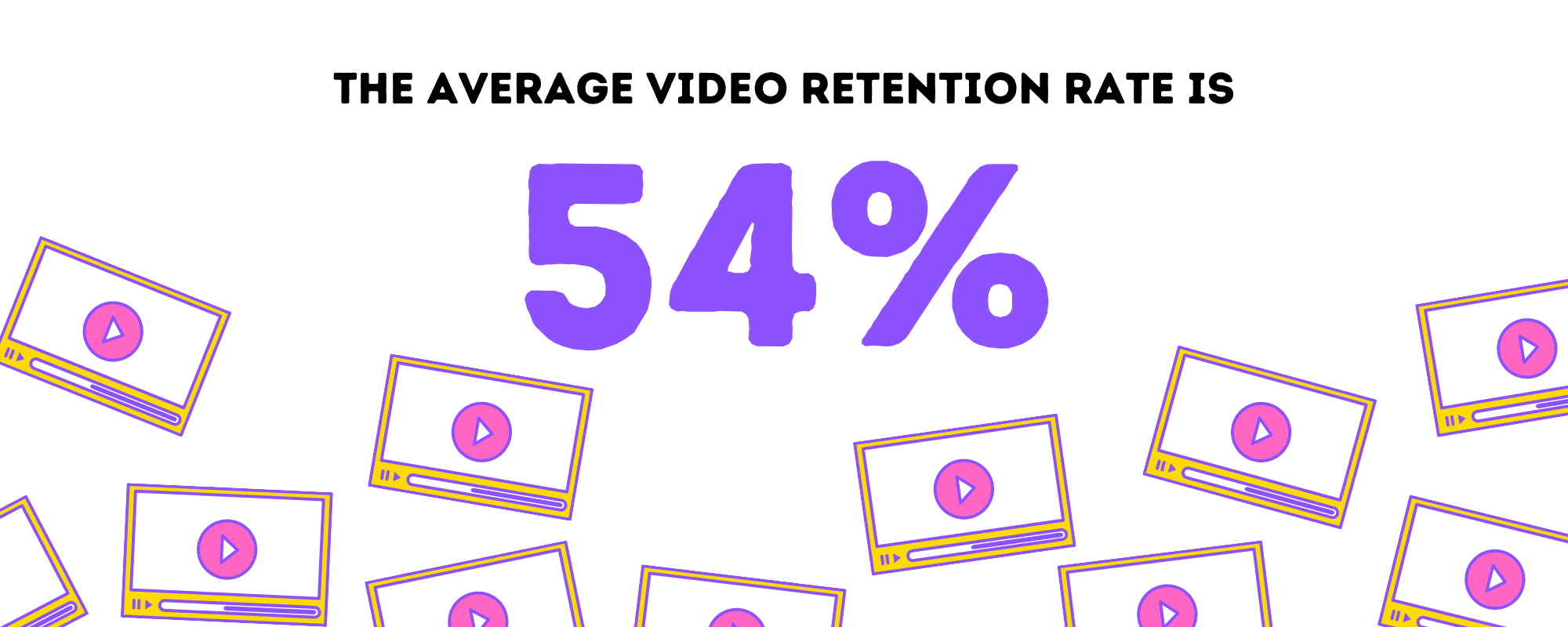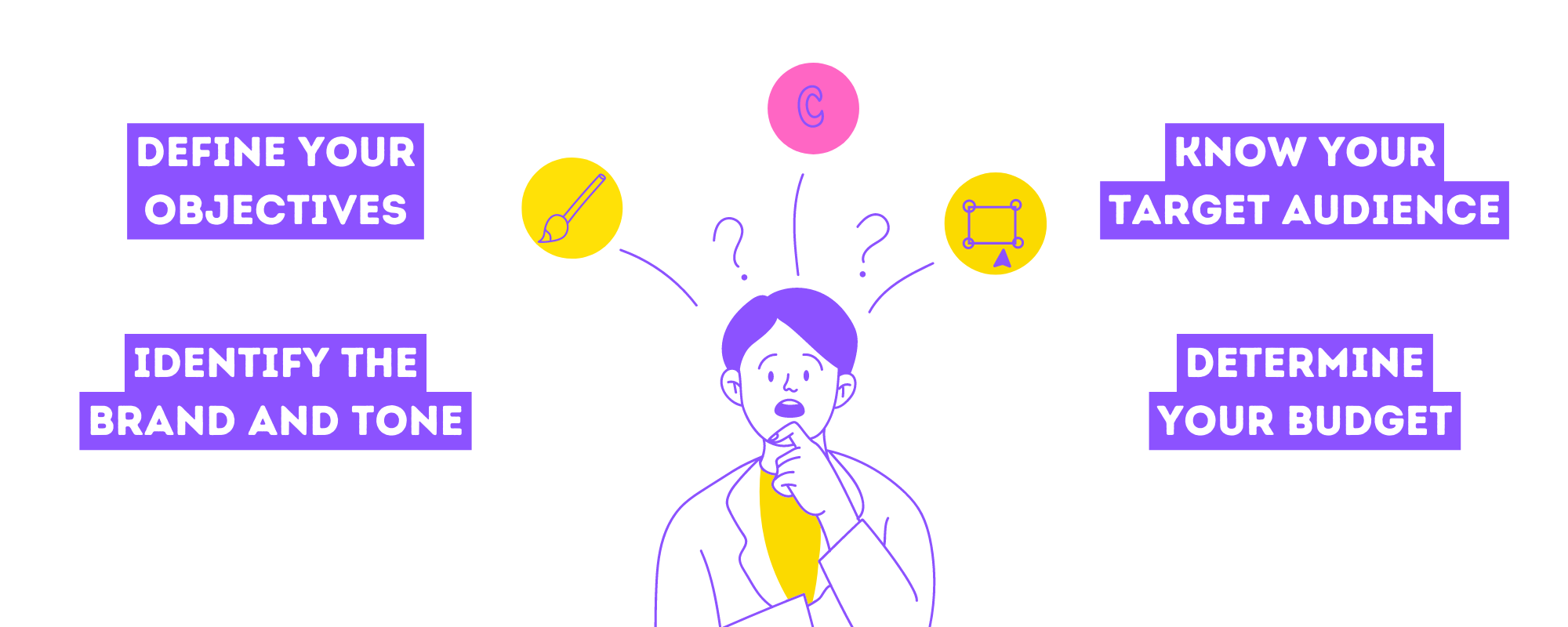
Exploring Different Types of Videos: Which One is Right for You?
CATEGORIES
Tags
24/7 analytics australia automation Business Process Outsourcing company Copywriting CRM customer support data data and analytics Delegate digital digital advertising digital marketing Digital Support Staff ecommerce Email Management Email Marketing Entrepreneur Freelance Writers google ads graphic design Hiring Freelancers Marketing offshore offshoring ominchannel support organizer outsource Outsourcing Philippines Project management reporting seo seo audit Shopify Small Business social media Social media experts social media management United States video Virtual Assistant Virtual Team
Whether you are a startup or an established business, including videos in your marketing campaigns is a must. In 2023, the average person watches 17 hours of online video per week, which is 84 minutes of video every day.
That’s a good amount of time to leverage, whether building awareness for your brand, uploading product demos, or engaging with your audiences in general.
Videos are shared twice as likely than other types of content, which makes it easier for your followers to share your content to others. And when you create videos with real valuable content, you increase the chance that they will share and remember you. The average video retention rate is 54%.
This can still go up if you execute it with alignment to your brand, your audience, and relevant concepts they’ll be able to relate to.
With that, you should know what are the essentials in making your videos, and how important they are to the success of your business.
What should be in your videos?
The elements that make videos effective in marketing and sales
To make your marketing videos successful, include important elements that increase awareness, retention, and eventually, sales. Because before your audience gets to the final decision of buying, they need to find your videos valuable and appealing.
- Make your videos user friendly. A good user experience requires fast loading times, clear resolutions, helpful annotations, subtitles, section intros, and mobile friendliness.
- Make sure they are shareable. People share content for many reasons, like influencing how others perceive them, entertaining friends, and recommending a useful resource to their consumer base. When they share your videos, they vouch for your business and it can spark others’ interest.
- Then, try determining your target audience’s interests, the brand and influencers they follow, and collaborate with them. It can feel more real and trustworthy when a trusted influencer promotes your product than when you yourself tell them how fantastic your product or service is.As Scott Cook, CEO of Intuit, said, “A brand is no longer what we tell the consumer it is–it is what consumers tell each other it is.”
- And lastly, always consider your SEO ranking and include keywords you want your video to rank highly. Use keywords in your title. Your video’s title is the most important factor for ranking well on online platforms and to reach your target audience easier and faster.
Real valuable content
- The story of your video is important, whether you’re marketing a product or service or raising brand awareness. It must be appealing to the audience you are targeting and it has to communicate your message well. Make it captivating and accurately presented.
- Focus on one clear message, especially if you’re trying to reach a wider audience. Your viewers only have so much attention to devote to watching your video, and if you try to cram too much in, they will skim over and retain nothing.
- Make sure your video shows and tells your message.
- Show who needs your product/service
- Tell what you have to offer
- Show what it’s like to support and collaborate with you
- Tell what set you apart
- Show how your consumers’ life has improved after using your product/service
Visual elements
What makes videos different from other types of content is their visual elements. There are several types of video formats you can try, like animation, motion graphics, screencast, and more. And aside from the common visual elements in video, consider the current trend too.
- For one, upload an interesting thumbnail. Both Facebook and YouTube let you add a thumbnail to go with your video. These thumbnails are a great way to capture viewers’ attention and get them excited about your video before it begins to play.
- And another important thing: tell your story with and without sounds. We can really say it’s all on the visuals, as many social media platforms now autoplay videos without sounds. Think how you can make your video appealing and interesting to viewers both silently and with the sound on.Consider how you can create a compelling story even without audio. If users can understand your story without hearing it, you could significantly boost the effectiveness of your material.
Audience match
Another thing to include in your videos is elements that appeal to your audience. Consider strategies to connect closely with your brand’s niche. Focus on your target audience as they are the ones who will watch your online videos the most.
And because not everyone who watches a video online is looking for information about your product, you have to target specific groups of the audience that are relevant to your brand.
Make your videos available to various social media platforms. Do not limit your video marketing efforts to YouTube alone. Video is a high-performing content type, and you should leverage its power across social media platforms to captivate your audience.
And while at it, use social media tools to gather relevant information about your target audience’s interests to further improve your marketing efforts. Use analytics and metric tools to monitor your videos’ performance and cater to your audience.
CTAs
When creating your videos, make sure to include calls to action (CTAs). A call to action, whether it’s directing potential buyers to additional information about your company or sending them right to the checkout process, is one of the most important, yet easily overlooked, aspects of a successful business marketing video.
So where should you place your CTAs?
There are three common positions for putting calls to action into videos:
- Pre-roll CTAs at the beginning of the video ensure that every viewer sees them and has the option to click on them.
- Mid-roll CTAs can appear anywhere between the beginning and the end of the video. They are intended to reach viewers at their most engaged.
- Post-roll CTAs appear at the very end of the video to make sure that the user is highly engaged before being presented with a CTA.
According to Wistia, 95.9% of CTAs are placed at the end of the video. Only 4% prefer the mid-roll option, while only 0.1% prefer the pre-roll Call to Action.
These video elements will help you kickstart and amp up your video marketing journey. The next thing to consider is what type of marketing video you need to create, so here’s a list of different types of marketing videos and where they are used for.
Types of Marketing Videos
A live action video is a recording of either motionless or moving objects. Rather than making things digitally, it is about real people and real places. Live action videos can highlight a compelling spokesperson or people in your office. They can be entertaining or educational in nature.
You can use live action videos for tutorial videos, Interview/Q&A, company culture video, and product demo videos.
2. Animation
Animation is a video style made of several still images. When images are played one after the other, they create a sense of movement. This style is excellent for showing something that cannot be found in the real world.
Animation is mostly used in explainer videos and marketing and promotional videos where you can show off your own brand with animated elements that show the style, energy, and personality of your company.
3. Whiteboard videos
Whiteboard animation presents a creative story using images created on a whiteboard (or something resembling a whiteboard) by artists who record their artistic process. A whiteboard video is great for explaining a practical procedure in an easily digestible manner, whether it’s using simple stick figures or more complex frameworks.
Whiteboard videos are ideal for number-heavy presentations since they make it simple to establish a solid flow of alternating talking and writing in order to optimize audience comprehension.
To enhance your whiteboard videos, add thinking bubbles, graphs, diagrams, charts, or anything else creative.
4. Motion Graphics
Motion graphics videos are a sort of animation that communicates through text and shapes, but they do not usually present a story. Music, sound, and voice-over are commonly used in these videos to convey simple information with energy and power.
This makes them a great tool for describing a product, service, or illustrating a result. Motion graphics are an excellent approach to demonstrate how you want to accomplish something or how something was accomplished.
5. Screencast videos
A screencast (sometimes known as a screen capture) is a digital recording of a computer screen that often includes voice-over narration. It’s a no-frills way of training that’s frequently used by IT companies to demonstrate a software product.
Screencasts are undoubtedly the most effective technique to demonstrate how a programme works. It can be difficult to describe how to use an app using only words and graphics.
Screencasts walk viewers through the operation step by step, so all they have to do is follow along and do what they see.
6. Live streaming
Live streaming broadcasts live video to your viewers via YouTube, Facebook, Instagram, or your own website.
When you want to immerse your audience in an up-to-date and intimate experience, live streaming is perfect. If you’re covering an event and want to communicate with your audience right away, start a live streaming.
Keep in mind that you should first create your audience because this strategy works best when you already have a following.
7. Photo montage
Photo montages or slideshows use photographs, music, and a voiceover to portray a story that often evoke strong emotions. These are excellent for recapping events, particularly milestones such as anniversaries, weddings, and birthdays.
This is best used for social media posts, welcome videos, and “about me” videos as they allow you to show off some sentimental content. The first step towards conversion is to tap into your prospects’ positive emotions.
8. User Generated video
Do you have a limited amount of time and resources? Encourage your followers to create videos using your product to generate content for your brand. You can run a contest in which your followers submit videos to answer.
You can also contact influencers, or reshare or repurpose videos that your followers have shared organically with their consent.
How to Pick the Right Type of Video
Define your objectives
Before you shoot or create your video, define your main objectives for the said video. Most video marketing goals fall into one of the following categories:
- Awareness – Create videos that will help you get on the radar of your customers. They must be entertaining, memorable, shareable, and highly original. Any ‘viral video’ would fall into this category.
- Engagement – Engaging videos are meant to spark a reaction, such as a like, comment, or share. Videos in this category typically contain an emotional component to entice viewers to participate, such as an engaging behind-the-scenes video or thought-provoking interview.
- Education – Educational videos educate your audience. If you want to engage with potential customers, a client case study might provide further insight into the impact of your business. A how-to video can also help existing clients understand more fully how to maximize your offer.
- Conversion – Conversion video is typically used near the end of the marketing funnel. The most important measure for this type of video is sales, which is closely followed by the clickthrough rate. Viewers clicking but not purchasing, for example, may indicate a gap between your marketing efforts and your products.
Identify your brand tone and language
Assess your brand and identify what tone and language works best. Your business should speak to and for your target audience. Decide what tone and language best reflects your values and goals and incorporate them into your videos.
Make sure to be consistent with these details as they will set the mood for current and upcoming videos in the future.
Know your target audience
Knowing your audience helps you narrow down the voice and tone with which to communicate with them. This makes deciding between a more traditional technique (such as live action or photo montage) and something a little more dynamic (such as animation or motion graphics) easier.
Determine your budget
Great videos may be made on any budget, although some types of videos are more expensive than others.
For example, if you have a lot of actors and locations, live action might become expensive. Graphic designers and animators are needed for both animation and motion graphics. The more complicated something is, the more expensive it becomes, so consider ways to simplify your idea while still expressing your point.
The age of digital means it’s the age of videos
Videos have become one of the main types of content consumed by people, and you’re missing out if you think you can carry on without them! You might hesitate to start investing in videos, especially if you think of the costs and the efforts needed, but you don’t always have to do them alone.
Consider working with professional graphic designers where your budget will not go to waste. You decide the direction of the video, the tone, the flow, and communicate it clearly to an outsourced graphic design expert to see it come to life as quickly and high-quality as possible.
Videos may seem intimidating at first, but once you work with a team that puts your business’ goals at the forefront, a team that aligns content with your brand, you’ll discover how videos are a game-changer in the industry– a must-have in your marketing campaigns.









